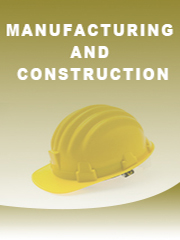Report overview
Air Separation Equipment is the equipment used in the separation of the air, which is used to produce the oxygen, nitrogen, etc.
Air Separation Equipment produces one or both of the two most common atmospheric industrial gases (nitrogen and oxygen) as gases and sometimes also as liquid products. Some air separation plants also produce compressed dry air, argon, ultra high purity (UHP) oxygen, or, occasionally, the "rare gases" (neon, krypton and xenon).
This report aims to provide a comprehensive presentation of the global market for Air Separation Equipment, with both quantitative and qualitative analysis, to help readers develop business/growth strategies, assess the market competitive situation, analyze their position in the current marketplace, and make informed business decisions regarding Air Separation Equipment. This report contains market size and forecasts of Air Separation Equipment in global, including the following market information:
Global Air Separation Equipment Market Revenue, 2018-2023, 2024-2029, ($ millions)
Global Air Separation Equipment Market Sales, 2018-2023, 2024-2029, (K CMPH)
Global top five Air Separation Equipment companies in 2022 (%)
The global Air Separation Equipment market was valued at US$ 4771.2 million in 2022 and is projected to reach US$ 6450.6 million by 2029, at a CAGR of 4.4% during the forecast period. The influence of COVID-19 and the Russia-Ukraine War were considered while estimating market sizes.
Global Air Separation Equipment key players include Linde, Air Liquide, Praxair, Air Products, Hangyang Group, etc. Global top five manufacturers hold a share over 50%.
China is the largest market, with a share about 30%, followed by North America and Europe, both have a share about 45 percent.
In terms of product, 20-60 K CMPH is the largest segment, with a share over 55%. And in terms of application, the largest application is Chemical Industry, followed by Industry Gas.
We surveyed the Air Separation Equipment manufacturers, suppliers, distributors and industry experts on this industry, involving the sales, revenue, demand, price change, product type, recent development and plan, industry trends, drivers, challenges, obstacles, and potential risks.
Total Market by Segment:
Global Air Separation Equipment Market, by Type, 2018-2023, 2024-2029 ($ Millions) & (K CMPH)
Global Air Separation Equipment Market Segment Percentages, by Type, 2022 (%)
Below 20 K CMPH
20-60 K CMPH
Above 60 K CMPH
Global Air Separation Equipment Market, by Application, 2018-2023, 2024-2029 ($ Millions) & (K CMPH)
Global Air Separation Equipment Market Segment Percentages, by Application, 2022 (%)
Chemical Industry
Industry Gas
Metallurgy Industry
Other
Global Air Separation Equipment Market, By Region and Country, 2018-2023, 2024-2029 ($ Millions) & (K CMPH)
Global Air Separation Equipment Market Segment Percentages, By Region and Country, 2022 (%)
North America
US
Canada
Mexico
Europe
Germany
France
U.K.
Italy
Russia
Nordic Countries
Benelux
Rest of Europe
Asia
China
Japan
South Korea
Southeast Asia
India
Rest of Asia
South America
Brazil
Argentina
Rest of South America
Middle East & Africa
Turkey
Israel
Saudi Arabia
UAE
Rest of Middle East & Africa
Competitor Analysis
The report also provides analysis of leading market participants including:
Key companies Air Separation Equipment revenues in global market, 2018-2023 (Estimated), ($ millions)
Key companies Air Separation Equipment revenues share in global market, 2022 (%)
Key companies Air Separation Equipment sales in global market, 2018-2023 (Estimated), (K CMPH)
Key companies Air Separation Equipment sales share in global market, 2022 (%)
Further, the report presents profiles of competitors in the market, key players include:
Linde
Air Liquide
Praxair
Air Products
Taiyo Nippon Sanso
Hangyang Group
Sichuan Air Separation
HNEC
Messer
JSC Cryogenmash
AMCS
Gas Engineering LLC
Air Water
Outline of Major Chapters:
Chapter 1: Introduces the definition of Air Separation Equipment, market overview.
Chapter 2: Global Air Separation Equipment market size in revenue and volume.
Chapter 3: Detailed analysis of Air Separation Equipment manufacturers competitive landscape, price, sales and revenue market share, latest development plan, merger, and acquisition information, etc.
Chapter 4: Provides the analysis of various market segments by type, covering the market size and development potential of each market segment, to help readers find the blue ocean market in different market segments.
Chapter 5: Provides the analysis of various market segments by application, covering the market size and development potential of each market segment, to help readers find the blue ocean market in different downstream markets.
Chapter 6: Sales of Air Separation Equipment in regional level and country level. It provides a quantitative analysis of the market size and development potential of each region and its main countries and introduces the market development, future development prospects, market space of each country in the world.
Chapter 7: Provides profiles of key players, introducing the basic situation of the main companies in the market in detail, including product sales, revenue, price, gross margin, product introduction, recent development, etc.
Chapter 8: Global Air Separation Equipment capacity by region & country.
Chapter 9: Introduces the market dynamics, latest developments of the market, the driving factors and restrictive factors of the market, the challenges and risks faced by manufacturers in the industry, and the analysis of relevant policies in the industry.
Chapter 10: Analysis of industrial chain, including the upstream and downstream of the industry.
Chapter 11: The main points and conclusions of the report.
